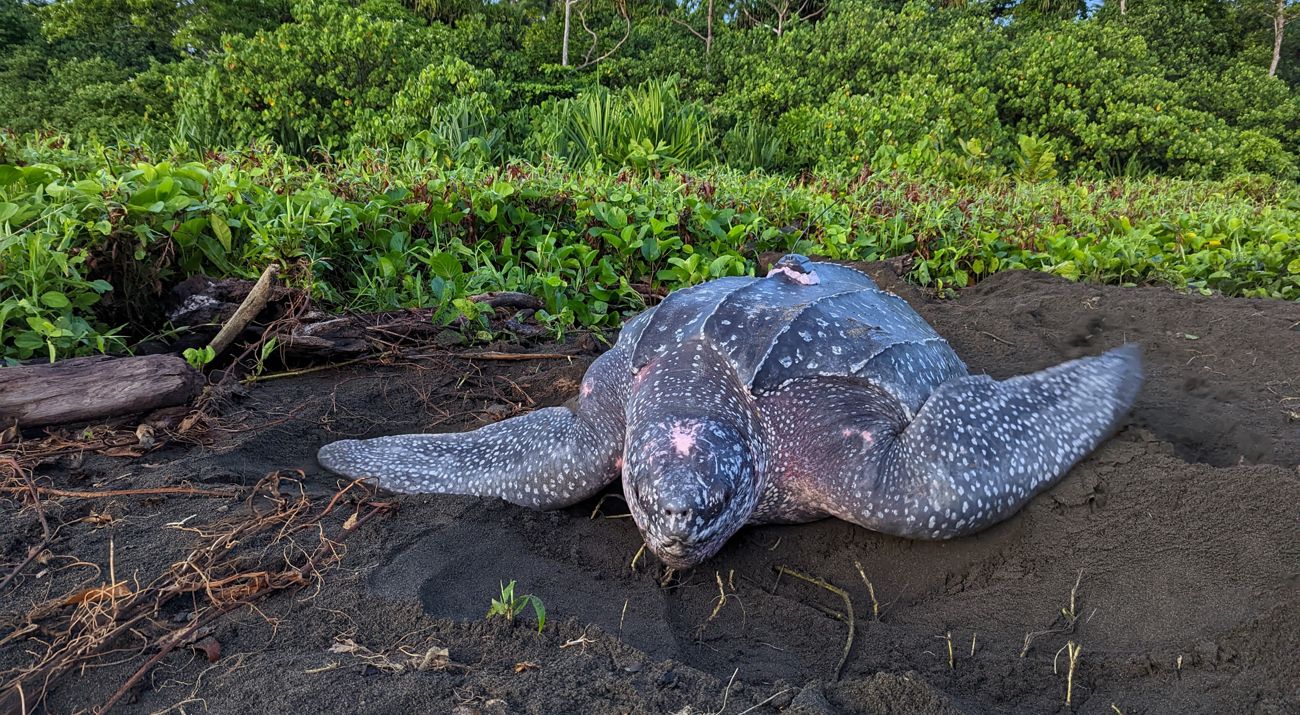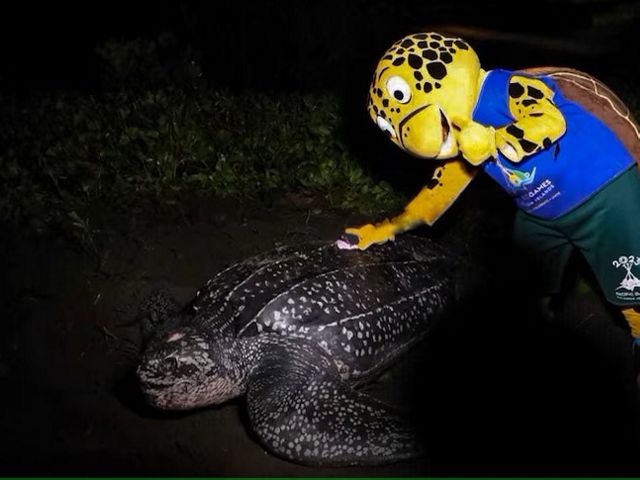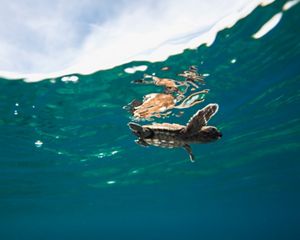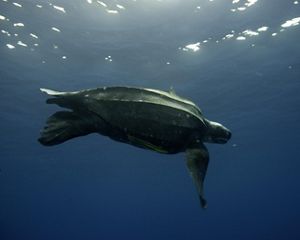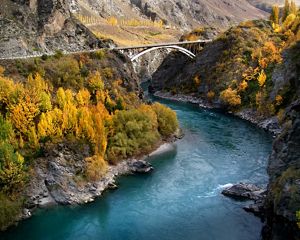Endangered leatherbacks brave Cyclone Gabrielle
Despite getting blown off course, two leatherbacks are back on track to their feeding grounds in the south Pacific
Stormy Leather: Turtle Pair's Incredible Journey
Pete Waldie talks with RNZ host Kathryn about two leatherbacks' epic journey through Cyclone Gabrielle in the Pacific (15 March 2023).
[Transcript coming soon.]
In March 2023, two leatherback turtles from the critically endangered Western Pacific subpopulation made it to New Zealand and Australian waters from the Solomon Islands, despite getting blown off course by Cyclone Gabrielle. Originating from their nesting grounds in the Solomon Islands, the two tracked leatherbacks, Solo and Lady Maga, were on their way south in the waters of the Pacific Ocean.
The Nature Conservancy (TNC) is partnering with the Solomon Islands government to satellite tag nesting turtles and follow their migrations to see where they go. The data collected is critical and necessary to help better understand the species and guide conservation efforts.
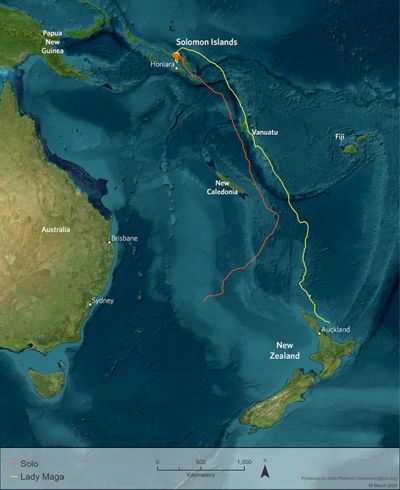
Around 20 female turtles nest yearly near Haevo Village on Santa Isabel Island in the Solomon Islands. In last year’s cohort of tagged female leatherbacks, two individuals, ‘Lady Maga’ and ‘Solo’ left their breeding grounds at Haevo in early January. But they encountered Cyclone Gabrielle 2,500 kilometers into their journey, facing winds of 100 kilometers per hour and six-meter waves. Thanks to the satellite trackers, we captured the detours these long-distance ocean travelers had to make and saw that they eventually reached New Zealand and Australian waters.
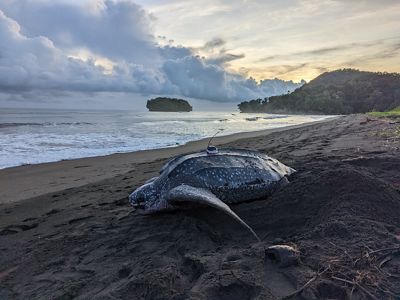
The turtles are under the watchful eye of TNC Solomon Islands Country Director Peter Waldie was watching the turtles' progress during the cyclone via their satellite trackers to see how they would be affected.
“On around 11 and 12 February, Solo and Lady Maga got up close and personal with Cyclone Gabrielle south of New Caledonia. As the trackers show, the turtles' courses diverted eastwards, either intentionally to avoid the cyclone or unintentionally as they were swept along on the prevailing currents of the cyclone’s trailing arm," said Peter.
“Facing winds of over 100 kilometers per hour and six-meter waves, they turned to the east to ride the cyclone’s trailing arm. As the cyclone moved on, they corrected their course southwards again."
The turtles’ trackers show them swimming gamely in the waters of the Pacific Ocean, heading south to feed on their exclusive diet of jellyfish. Lady Maga has now made it over 4,000 kilometers into New Zealand waters while Solo is currently 1,000 kilometers east of Sydney heading for southern Australian waters. Solo is also the mascot for the 2023 Pacific Games which will be held in the Solomon Islands in November 2023.
Peter says that leatherbacks are incredible divers, with a record currently standing at 1,280 meters—a remarkable depth for an air-breathing animal. Another tagged turtle from the same December 2022 cohort, Princess Beauty, has been recorded diving to a depth of 1,034 meters. Deep dives are thought to enable the turtles to ‘cool off’ in the warm tropical waters.
The turtle tagging program is supported through a grant from the Pacific Development and Conservation Trust to gather data about the Western Pacific leatherback migration. This program uses satellite transmitters to track the movements of females during their nesting seasons, as well as their migration routes to their feeding grounds, which can be thousands of kilometers away—from Australia and New Zealand all the way to California in the United States.
Sadly for the Western Pacific subpopulation, the outlook is dire. The population is crashing fast, hence the race to collect data and work out the best way to protect them. The biggest threats are egg poaching, sea-level rise, plastic ingestion and by-catch in industrial fishing.
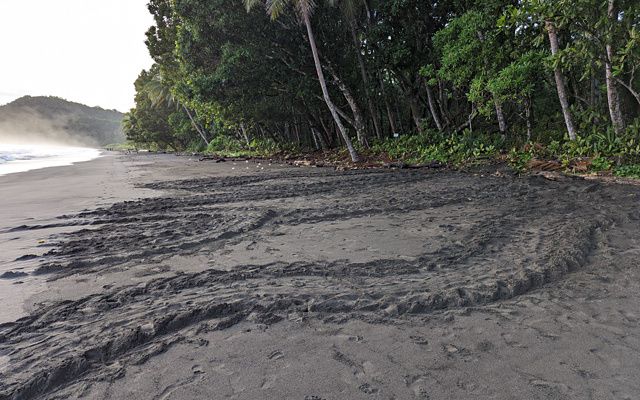
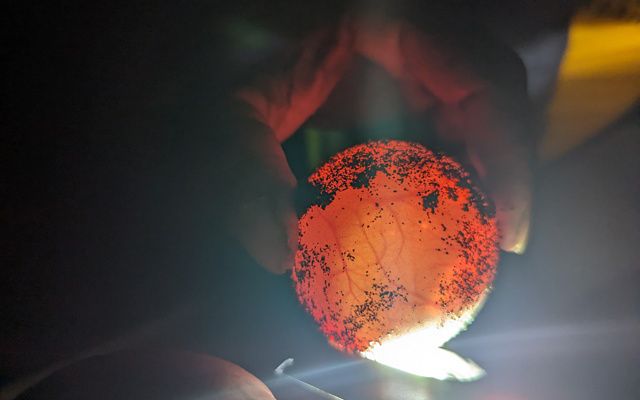
“Leatherbacks are pelagic and eat exclusively jellyfish—pretty wild for an animal that can weigh in at around a ton,” says Peter. “Unfortunately, their feeding strategy makes them quite vulnerable to by-catch in commercial surface longline fisheries.”
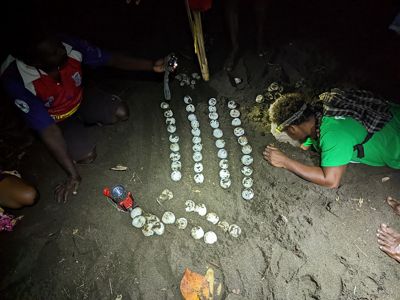
Solo, Lady Maga and Princess Beauty are Pacific icons fighting for their lives and their species. They are long-lived—possibly up to 100 years—and are thought to have existed for over 20 million years. Leatherbacks only nest every two to four years, spending the time in between spread around the globe from the Arctic Circle to the Southern tip of New Zealand.
As well as leading the satellite tracking program, TNC in the Solomon Islands is training local women and men to be employed as turtle rangers. The rangers patrol turtle nesting sites on beaches, deterring poachers and predators such as rats from eating the eggs. This work is starting to make a difference, but it is equally important to reduce by-catch of turtles as they migrate and forage across the globe.
